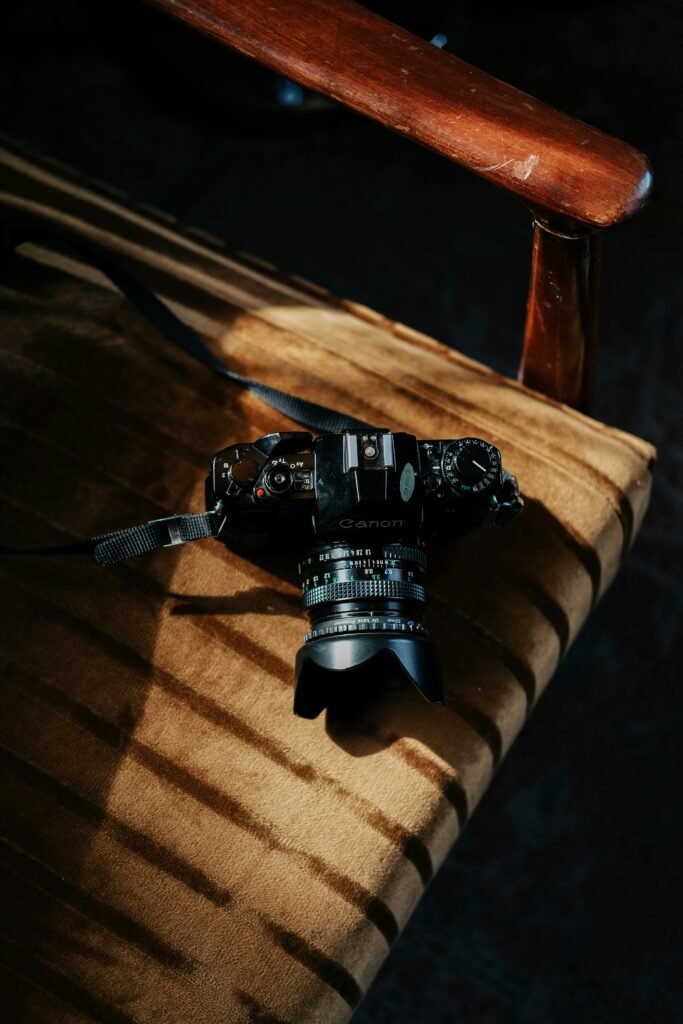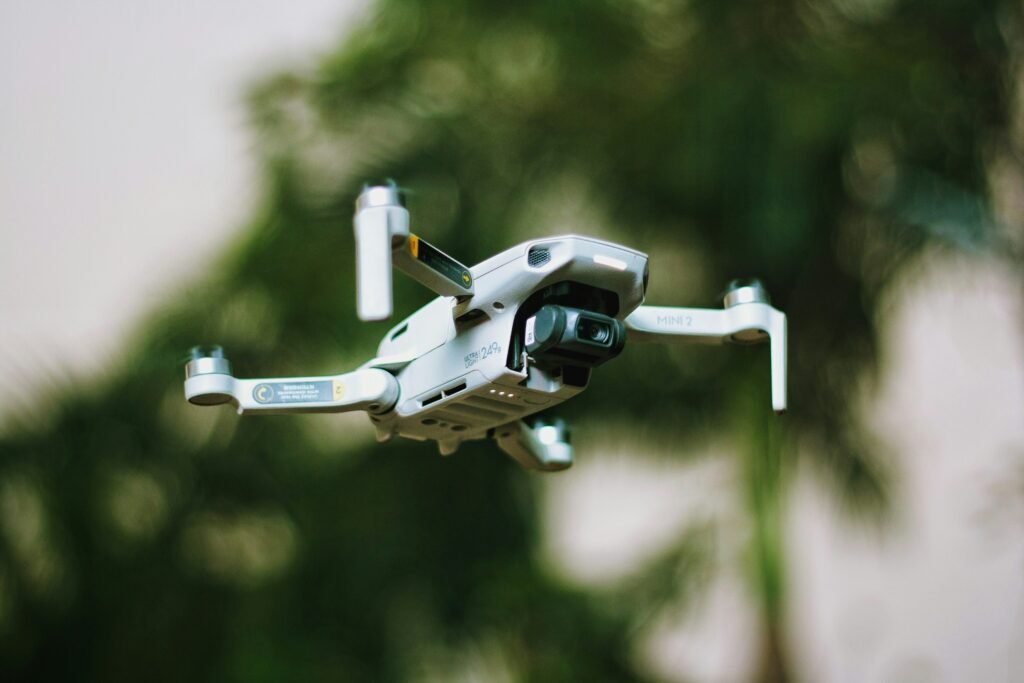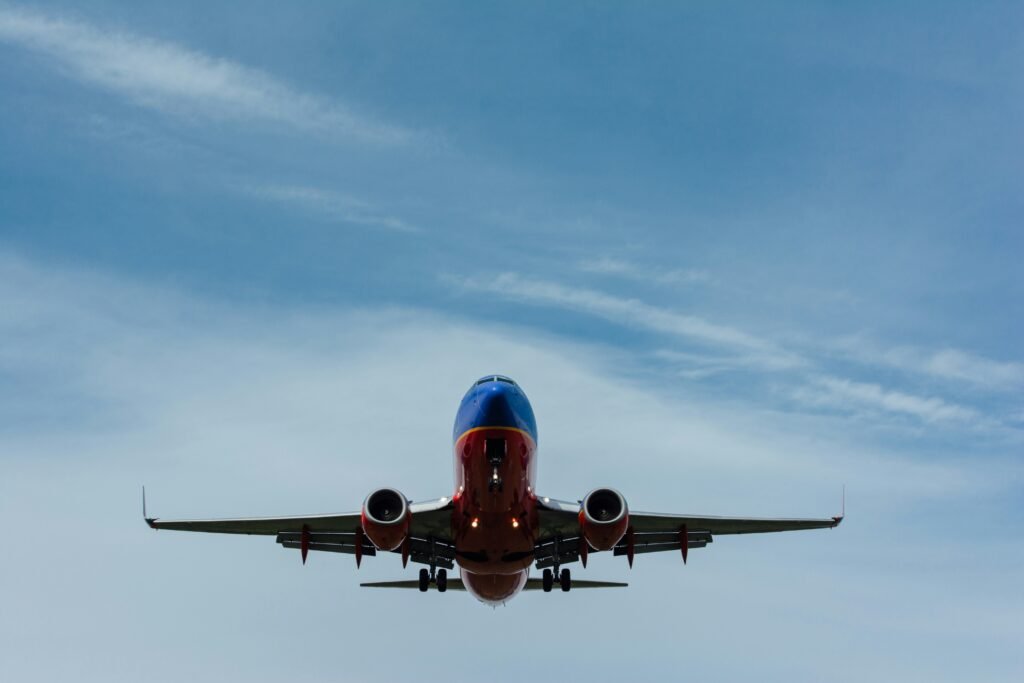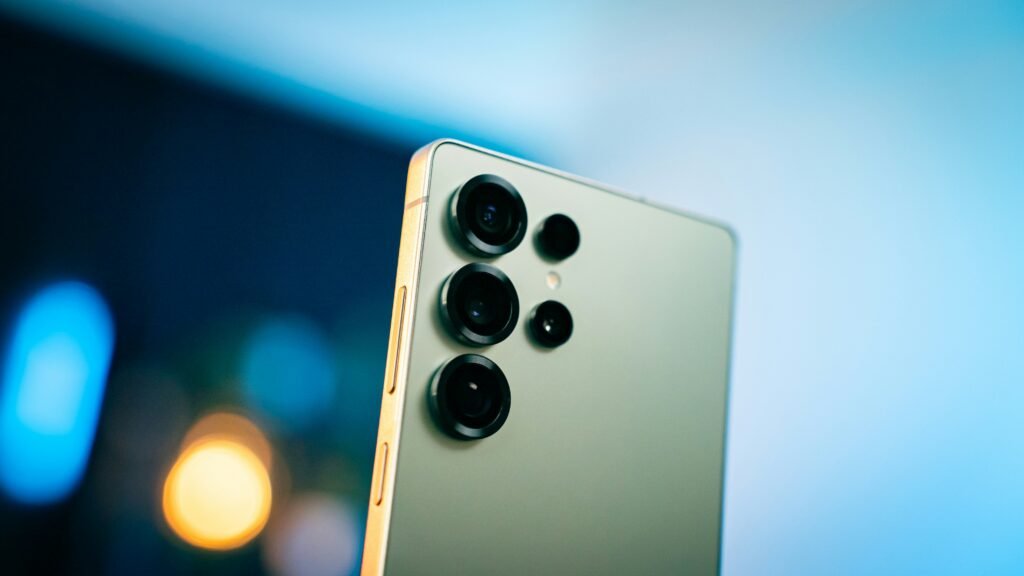
Introduction to Photography in 2026
Photography has experienced remarkable transformations since its inception, evolving from basic techniques to a highly sophisticated medium of expression and documentation. As we progress into 2026, the significance of photography continues to grow, driven by technological advancements and the increasing demands of a visually-oriented society. In today’s digital landscape, individuals and professionals alike rely on high-quality cameras for everything from capturing personal memories to producing content for social media platforms and marketing campaigns.
The last few years have seen rapid innovation in camera technology. From mirrorless systems that deliver exceptional image quality to smartphones that now rival traditional cameras, consumers are presented with an abundance of choices. The 2026 photography market is characterized by features such as enhanced sensor sensitivity, improved autofocus systems, and video capabilities that are revolutionizing image capturing. These advancements cater to both amateur enthusiasts and seasoned professionals, underscoring the importance of selecting the right camera to suit specific creative needs.
Moreover, the rise in content creation has reshaped how photography is perceived and utilized. Social media influencers, videographers, and professional photographers are increasingly prioritizing high-resolution images that capture attention and engage audiences. The demand for quality visuals is prevalent across various sectors, including e-commerce, journalism, and event documentation. Therefore, choosing the appropriate camera has become more crucial than ever. In 2026, prospective buyers must consider their unique requirements, whether that entails portability, versatility, or specialized features, to achieve their desired photographic outcomes.
Factors to Consider When Choosing a Camera
Selecting the right camera for photography can significantly influence the quality of your images and overall photographic experience. Several key factors must be taken into account to ensure that you choose a camera that best meets your needs and preferences. Understanding these factors can help you make an informed decision when investing in photographic equipment.
One of the most crucial elements to consider is sensor size. Larger sensors typically provide better image quality, particularly in low light conditions, as they can capture more light. Additionally, sensor size affects depth of field and the overall aesthetic of your photographs. Cameras with full-frame sensors tend to perform exceptionally well, offering higher resolution and enhanced dynamic range compared to their cropped counterparts.
Megapixel count is another critical aspect when choosing a camera. While more megapixels allow for greater detail in photographs, it is essential to balance this with other features, such as lens quality and processing capability. A camera with a high megapixel count, paired with a high-quality lens, will yield exceptional results. However, do note that high megapixel sensors may also result in larger file sizes, requiring more storage space and processing power.
Image stabilization technology plays a vital role in ensuring sharp images, especially during handheld shooting. Optical image stabilization (OIS) can help minimize the effects of camera shake, while sensor-shift stabilization can provide even more precise control over image stability. Consider these options if you frequently shoot in challenging conditions or prefer shooting without a tripod.
Additionally, the autofocus system is essential for capturing sharp images quickly and efficiently. A camera with an advanced autofocus system will greatly enhance your photography experience, allowing you to track moving subjects confidently. Lastly, lens compatibility is paramount; ensure that the camera you choose has a diverse range of lenses available for various types of photography, from macro to wide-angle.
Types of Cameras Available in 2026
As of 2026, the world of photography is marked by an impressive array of camera types, each designed to meet diverse needs and preferences. Among these, Digital Single-Lens Reflex (DSLR) cameras remain a popular choice for professionals and enthusiasts alike. Known for their robust build and extensive lens compatibility, DSLRs offer superior image quality and control over manual settings. However, their bulkiness can be a disadvantage for casual photographers who favor portability.
In contrast, mirrorless cameras have surged in popularity in recent years, thanks to their compact size and advanced technology. These cameras do not require the mirror mechanism found in DSLRs, allowing for lighter designs without sacrificing image quality. Many mirrorless models now feature impressive autofocus systems and high-speed shooting capabilities, making them ideal for capturing fast-paced action. On the downside, battery life can be shorter than that of traditional DSLRs, which may necessitate carrying extra batteries on longer shoots.
Compact cameras, often referred to as point-and-shoots, continue to appeal to those seeking simplicity and convenience. These cameras are lightweight and easy to use, with automatic settings that appeal to beginners. While compact cameras have made significant advancements in recent years, particularly in low-light performance and zoom capabilities, they still may not match the image quality delivered by DSLRs and mirrorless systems.
Smartphones, meanwhile, have transformed the way people approach photography. With the continuous improvement of smartphone camera technology, many devices now feature multiple lenses and impressive software enhancements that allow for stunning photography in a compact package. However, dedicated cameras still hold an edge in manual controls and specialized features. Each type offers unique benefits and drawbacks, ensuring that photographers can find the right fit for their specific needs. Understanding the strengths and limitations of each type is vital for making informed choices in 2026.
Top Features to Look for in 2026 Cameras
As photography continues to evolve, the camera market is becoming increasingly sophisticated, with advanced features that cater to both amateur and professional photographers. When choosing a camera in 2026, there are several standout features to consider that can significantly enhance your photography experience. One of the most important advancements is the autofocus system. Modern cameras are now equipped with advanced autofocus systems that utilize artificial intelligence, allowing for faster and more accurate focusing on subjects, especially in high-speed situations. This feature is essential for wildlife and sports photography, where capturing a sharp image in a split second is crucial.
Another significant consideration is the capability to shoot 8K video. As the demand for high-resolution video content grows, many cameras now incorporate this feature, providing filmmakers and content creators with the ability to capture stunning videos with incredible detail. This is particularly advantageous for those who also engage in video production or want to future-proof their equipment.
Improved low-light performance is also a vital aspect of modern cameras. Enhanced sensors and image processing technology allow photographers to capture clear images in dimly lit environments without introducing excessive noise. This feature is particularly beneficial for event photography, such as weddings, where lighting conditions may vary. Furthermore, the connectivity options available on contemporary cameras, including Wi-Fi and Bluetooth, facilitate seamless sharing and transfer of images to devices for quick editing and posting on social media. These features ensure that photographers can efficiently manage their workflow, saving time and enhancing productivity.
By considering these key features—advanced autofocus systems, 8K video capability, improved low-light performance, and enhanced connectivity options—photographers can select a camera in 2026 that best meets their needs and aligns with their creative vision.
Best Cameras for Different Photography Styles
As photography evolves, so does the technology that supports it. The year 2026 has brought forth an impressive array of cameras tailored to suit various photography styles, thereby enabling both amateur and professional photographers to excel in their desired genres. Below, we categorize the best cameras based on specific photography styles: portrait, landscape, wildlife, street, and macro photography, providing recommendations that cater to the distinct needs of each niche.
Portrait Photography
For portrait photography, a camera capable of delivering exceptional color reproduction and fine detail is paramount. The Canon EOS R6 Mark II emerges as a top contender, featuring a full-frame sensor that excels in low-light conditions. Its eye-tracking autofocus ensures that subjects remain sharply in focus, making it an excellent choice for portrait photographers seeking both quality and ease of use.
Landscape Photography
When it comes to landscape photography, detail and dynamic range are crucial. The Nikon Z7 II, with its high-resolution 45.7 MP sensor, is perfect for capturing expansive vistas with stunning clarity. Its weather-sealed body allows for shooting in diverse environments, while its wide array of compatible lenses provides versatility, essential for achieving breathtaking landscape compositions.
Wildlife Photography
Wildlife photographers require a camera that offers fast autofocus and high-speed continuous shooting. The Sony Alpha a9 II stands out due to its 24.2 MP stacked sensor, which allows for impressive burst rates of up to 20 frames per second. This camera’s silent shooting mode is particularly beneficial for capturing elusive animals without disturbing them.
Street Photography
For street photography, portability and quick operation are essential. The Fujifilm X100V is a popular choice, featuring a compact design without sacrificing image quality. Its hybrid viewfinder enhances the shooting experience, allowing photographers to seamlessly switch between optical and electronic modes, making it versatile for dynamic urban environments.
Macro Photography
Macro photography demands precision and specialized equipment. The Olympus OM-D E-M1 Mark III is a strong option, renowned for its advanced image stabilization technology and high-resolution sensor. Coupled with dedicated macro lenses, this camera empowers photographers to capture intricate details of small subjects, making it ideal for this specialized genre.
In conclusion, selecting the best camera for your photography style in 2026 involves considering the unique requirements of each genre. From portraits to macro, the market offers a variety of options that cater to diverse preferences and skill levels. By choosing the right camera, photographers can enhance their ability to capture stunning images in their chosen styles.
Budget-Friendly Camera Options in 2026
As the photography landscape evolves, the availability of budget-friendly cameras that still offer exceptional performance continues to expand. In 2026, aspiring photographers and hobbyists can find several options that strike a perfect balance between quality and affordability. These cameras are engineered to produce high-quality images, making them ideal for those on a budget seeking to explore their passion for photography.
One notable contender in the budget-friendly category is the XYZ Compact Camera. This device combines a lightweight design with a powerful sensor, allowing users to capture stunning images without the hefty price tag typically associated with high-end models. Its user-friendly interface ensures that even those with minimal technical knowledge can leverage its capabilities effectively.
Another option worth considering is the ABC Mirrorless Camera. This camera offers the versatility of interchangeable lenses, allowing users to experiment with different styles of photography, from portraits to landscapes. Its compact nature makes it a great travel companion, ensuring that enthusiasts can take high-quality photos wherever they go. With features such as in-body stabilization and built-in Wi-Fi for easy sharing, the ABC model provides excellent value for money.
Additionally, the 123 DSLR Camera remains a strong choice for those wanting the traditional DSLR experience without overspending. Known for its robust build and superior image quality, this model appeals to photographers looking for pro-level performance. The intuitive controls and comprehensive manual modes let photographers grow their skills while still being able to produce outstanding results.
In conclusion, budget-friendly camera options in 2026 demonstrate that high-quality photography is accessible to everyone. With continued advancements in technology, photographers at any level can invest in a camera that meets their needs without compromising on quality or breaking the bank.
The Role of Lenses in Photography
When selecting a camera, the importance of lenses cannot be overstated as they significantly influence both the quality and character of the images produced. Lenses serve as the gateway through which light enters the camera, making them vital components in the photographic process. Understanding different types of lenses—including prime, zoom, wide-angle, and telephoto—can equip photographers with the knowledge needed to capture their desired images effectively.
Prime lenses are known for their fixed focal length, often resulting in superior image quality and larger maximum apertures, which allow for excellent low-light performance and striking depth of field. They are favored for portrait and street photography, where clarity and subject isolation are paramount. In contrast, zoom lenses offer versatility, enabling photographers to change their focal length without needing to switch lenses. This adaptability makes zoom lenses ideal for travel, nature, and event photography, where opportunities can be fleeting.
Wide-angle lenses are essential for capturing expansive landscapes or tight interiors, as they allow for a broader field of view. Such lenses can create a sense of depth and space, making them popular among architectural photographers. Conversely, telephoto lenses excel in bringing distant subjects closer, which is particularly useful in wildlife and sports photography. They compress the image perspective and can produce a desirable bokeh effect, highlighting the subject while blurring the background.
When considering lenses for specific cameras mentioned earlier, it is crucial to choose compatible options that maximize the camera’s capabilities. Brands often produce dedicated lenses tailored to their camera systems, ensuring optimal performance. Overall, selecting the right lens appropriately complements a camera and empowers photographers to achieve their creative visions effectively.
Accessories to Enhance Your Photography Experience
In the world of photography, having the right camera is just one piece of the puzzle. To truly elevate your photography experience and enhance the quality of your images, investing in essential accessories is vital. These tools can significantly improve functionality, streamline your workflow, and help you achieve the desired outcome in your photography endeavors.
One of the most crucial accessories is a tripod. A sturdy tripod offers stability for long exposure shots and ensures your camera remains steady during shooting. It is particularly beneficial for landscape and night photography, where precision and stability are paramount. Many tripods come with adjustable legs and head movements, allowing for creative angles and easy maneuverability.
Filters are another fundamental accessory, as they can dramatically alter the mood and quality of your photographs. For instance, polarizing filters are used to reduce glare and enhance colors in landscape photography. Meanwhile, ND (neutral density) filters can help achieve longer exposures even in bright conditions, allowing for stunning effects like smooth water surfaces. Each filter serves a specific purpose, further refining your images.
Equally important is an appropriate camera bag, which protects your equipment while providing easy access during shoots. Selecting a well-designed bag tailored to your needs not only safeguards your gear but also enables you to organize your additional accessories conveniently. With compartments for lenses and other items, a good camera bag can make a significant difference when on the move.
Finally, external flashes offer versatility that built-in camera flash often lacks. They allow for greater control over light, enabling photographers to achieve well-lit subjects, even in challenging environments. The ability to adjust light direction and intensity can completely transform a photograph, creating depth and interest.
Collectively, these accessories not only enhance your photography capabilities but also enrich the overall experience, enabling you to explore the full potential of your creativity.
Conclusion and Future Trends in Photography
In summarizing the key points discussed in this comprehensive guide, it is evident that the best cameras for photography in 2026 encompass a diverse range of features, catering to various preferences and requirements of both amateur and professional photographers. From mirrorless options with cutting-edge autofocus capabilities to DSLRs with superior image stabilization, there is no shortage of quality choices available.
Additionally, important considerations such as sensor size, lens compatibility, and connectivity options can significantly influence a photographer’s experience. As technology continues to advance, cameras are becoming increasingly versatile, making it essential for users to understand their specific needs and preferences to select the ideal model.
Looking to the future, several noteworthy trends are emerging within the photography landscape. One prominent trend is the integration of artificial intelligence (AI) in cameras, which enhances image processing and automates settings to create optimal photographs. This shift towards AI-assisted photography promises to simplify the creative process, lowering the barrier for those new to the field while enabling seasoned photographers to experiment with innovative techniques.
Moreover, the rise of computational photography is reshaping the way images are captured and edited. This technology uses algorithms to combine multiple images, enhancing dynamic range and detail in ways that traditional photography cannot achieve alone. As smartphones continue to improve in capabilities, professional-grade photography may soon be accessible in the palm of one’s hand.
As we move forward, sustainability is becoming increasingly important in the industry. Photographers are encouraged to consider environmentally friendly practices, including the use of eco-conscious materials when investing in new equipment. With these trends paving the way for future developments, the world of photography remains an exciting and dynamic field that continues to evolve in ways we can only begin to imagine.



